As we were packing to depart Milan for Como, a commotion from the street below attracted our attention. It turned out to be some sort of union march with workers carrying banners and making lots of noise with loudhailers and crackers. We’re not sure what these guys were complaining about but they were making a hell of a racket and after some time they eventually disappeared around the corner.
We left our apartment, dragging our bags heading for Milan Central Railway Station, only to meet the striking workers again at the very pedestrian crossing we needed to cross to get to the subway entrance. What to do? Do we sneak across the line of marching and chanting protesters inviting their wrath? After a few hesitant moments we decided “when in Rome…” and so proceeded across the intersection dodging the marchers, loudly yelling our support for whatever it was they were complaining about.
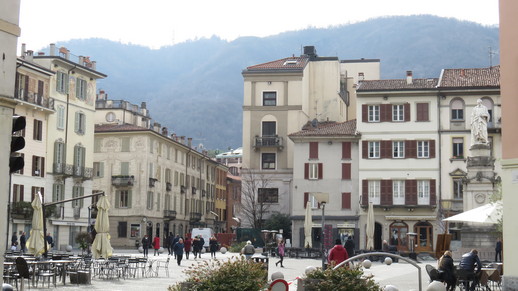
The train trip from Milan to Como was less than forty minutes and we soon arrived at Como San Giovanni railway station overlooking the city centre and the edge of beautiful Lake Como.
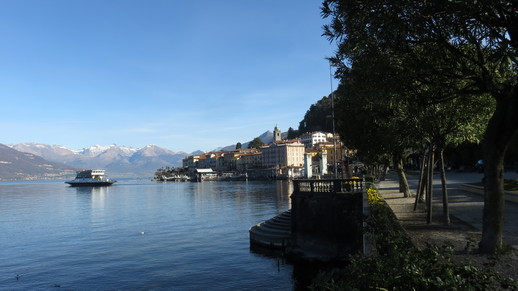
Our apartment was up a few flights of stairs overlooking a piazza and with a green grocer’s shop below. Dumping our bags we headed for the lake’s foreshore and then up a funicular railway to the village of Brunate to get a better view over Como and the southern reaches of the lake.
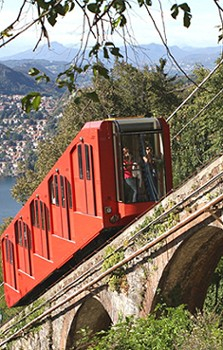
The railway was opened in 1894 and has a maximum gradient of 55% with a transit time of around seven minutes. The village of Brunate is situated approximately 700 metres above sea level and remains a holiday destination for (rich-bastard) families from the Como and Milan region who’ve built many villas here. After a quick look around Brunate we headed on foot along the approved goat track heading for Volta’s Lighthouse which stands on a hill in San Maurizio, 150 metres above Brunate.
The walking path from Brunate to the lighthouse took about 40 minutes but the effort was worth the wonderful views over the Alps and the surrounding lowland. The lighthouse was built in memory of Alessandro Volta (who developed the first electrical cell and who the ISO standard measure of electrical pressure [Volt] is named after). It was opened in 1927 on the 100-year anniversary of Volta’s death.
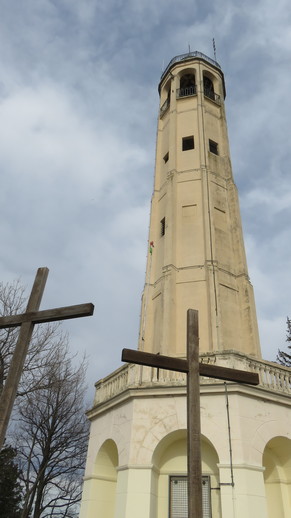
The next day we took a bus ride up the western side of the promontory jutting out into Lake Como to the township of Bellagio. Leaving early we arrived before many of the shops were open and the place had a wonderful quiet presence about it which was in stark contrast to the bus driver who managed to navigate the bus along stretches of road often no wider than the bus itself at speeds Stirling Moss would have baulked at all the while listening to disco hits of the 1970s.
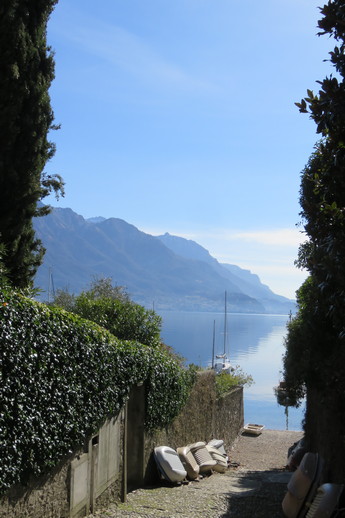
I won’t try to relate the number of times the bus would be dragged to a rapid stop only to creep along while another vehicle would be trying to pass in the opposite direction – again with not much space between them and the sides of the road (often someone’s front living room wall).
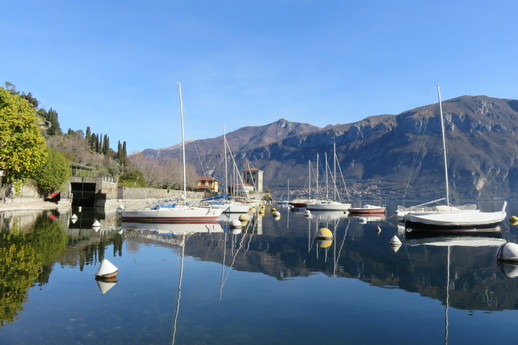
We wandered along the foreshore, through manicured parks and across to the other side of the promontory before returning to investigate the narrow winding streets set in the hillside over the town beset with many small shops. After lunch we returned to Como via the ferry making several stops along the way. The ferry was in fact a hydrofoil and it was great to feel the surging power as the foils lifted the hull clear of the surface of the lake. It brought back fond memories of trips across Sydney Harbour to Manly when hydrofoils provided a rapid transit option for this route from the 1960s to the mid 1980s.
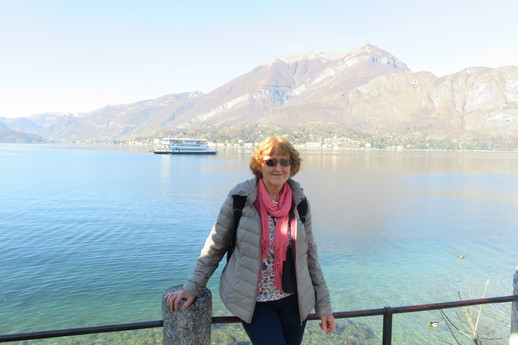
For balance, the next day, we headed by bus to Managgio along the western shoreline of Lake Como arriving more relaxed due to a wider roadway and in time for a pleasant lunch in the piazza watching the sun glistening off snow peaked mountain ridges. Along the way we passed George Clooney’s summer residence, Villa Oleandra, at the village of Laglio, reportedly purchased for ~AUD 14,000,000 in 2002.
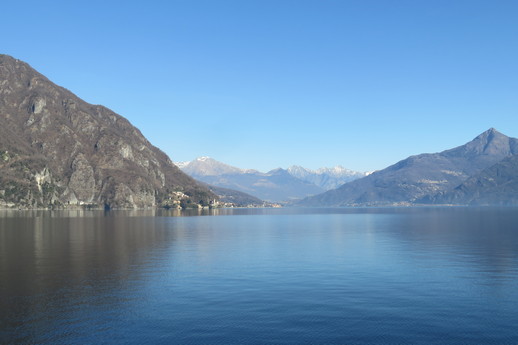
Upon our return to Como, we visited the cathedral of Como. Described as the last Gothic cathedral built in Italy it is built on the site of the earlier Romanesque cathedral dedicated to Santa Maria Maggiore. Construction commenced in 1396, 10 years after the foundation of Milan Cathedral and did not finish until 1770.
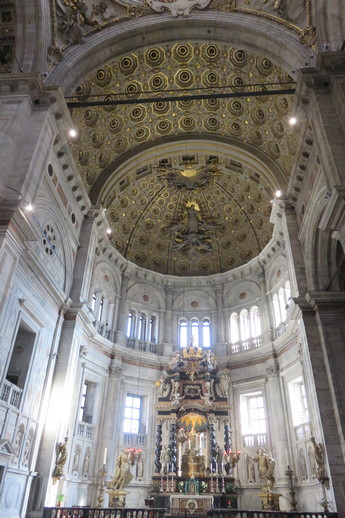
The weather in Como has been perfect with blue skies and cold enough to warrant scarves and jackets. Our stay has been most enjoyable with Como and the surrounding townships not yet overrun with the hordes of tourists that are attracted to such places when the weather becomes a little warmer.
Addio Como. Ciao Turin.
Thank you so much for the updates! Il be sure to show Decs when he comes home.
Xoxo
Sounds and looks like that you’re having a wonderful time taking in scenery and culture of Italy. Glad the weather has been so kind to you and that you didn’t get lost in the throng of the union march. I’m enjoying reading your travel commentary. Thanks . Continued safe travels and be well.
What a great read. It’s like I can hear your voice (rich bastards indeed!). It’s a gorgeous part of the world and great you had good weather. Did you get your feet wet or climb that tower? We’re off to Victoria tomorrow for a few days cycling. My first foray since the falling-off-the-ladder thing. See how I go. Stay safe. Enjoy xx
Construction workers in Italy are obviously pretty slow labourers – hundreds of years to finish the job is really stretching it out. It’s a long time to wait to get to enjoy the finished building – or go to Mass. Probably spent too much time protesting on the streets over pay and conditions!
Love the commentary, Greg.
Thanks Dianne, your comment demonstrates an acute knowledge of history (ancient and otherwise) …
The construction of the Cathedral of Milan (Duomo) officially started in 1386 by Bishop Antonio da Saluzzo and was supported by the ruler of Milan, Gian Galeazzo Visconti, who had grand visions for the cathedral. Though originally started in terracotta stone, once the grandeur of the project was realised, Condoglian marble from Lake Maggiore was chosen. The entire building is made up of this pink-hued white marble. To bring it from the quarries of Candoglia, canals were dug leading to the construction site, evidence of which is still visible along the famous navigli, the canals left over from the network built in southern Milan specifically for that purpose! Thousands of artists, sculptors and specialised workers were involved in the construction of the Duomo. Architects from across Europe were invited to work on the project (at least 78 different architects in total) and as it grew and grew, its construction dragged on over the years. It was consecrated in 1418 but only the nave was really finished at that time. Heavy construction continued for another 200 years … but it’s still not finished!
After its consecration in 1418, the Duomo remained incomplete for centuries. Politics, lack of money, theft and corruption of donated funds and indifference in a seemingly never-ending project (imagine a mammoth structure in the middle of your town left unfinished for your entire lifetime and that of your father’s… and your grandfather’s) and other setbacks kept the cathedral on standby for what seemed like forever. Actually, it was Napoleon who finished the facade and jump-started the final stages of construction in the early 19th century. Considering its construction is still continuing, this could be considered the longest-worked cathedral in the world. A five-year project to clean the building was started in 2002 and routine restorations and cleaning are continually taking place to keep maintain its gleaming stone. During our visit in Feb 2019, scaffolding is still in evidence around certain exterior parts of the Du0mo. Acid rain and diesel exhaust fumes have a lot to answer for.